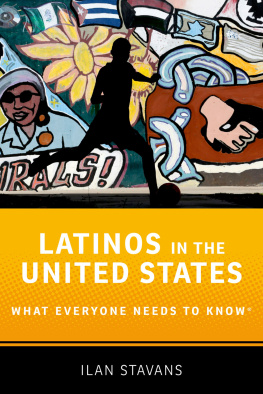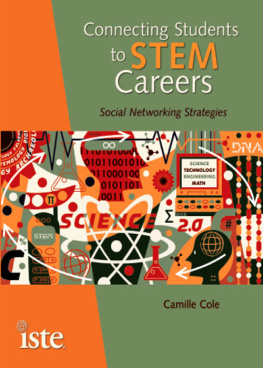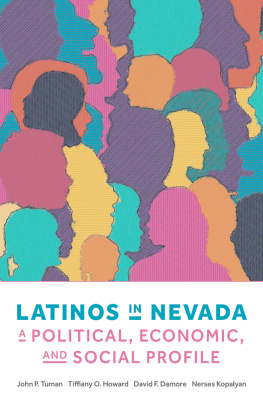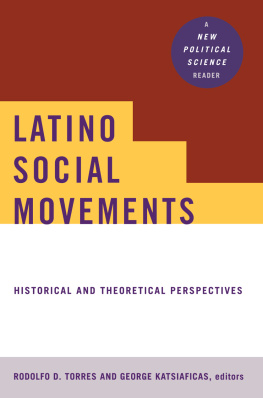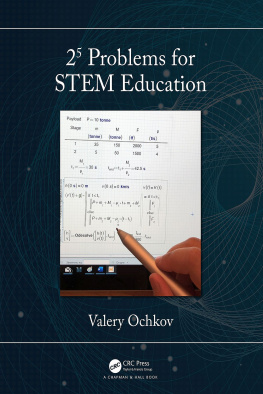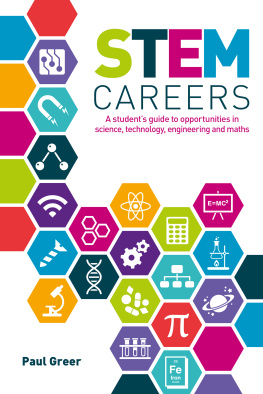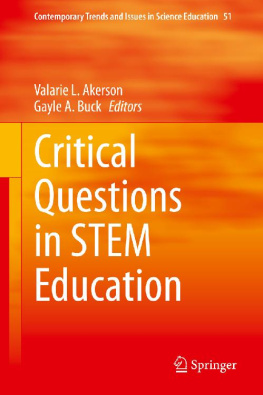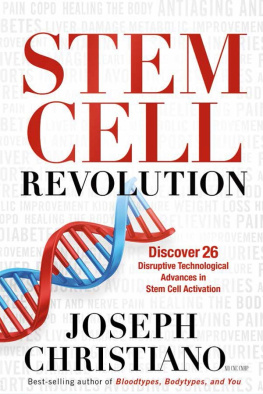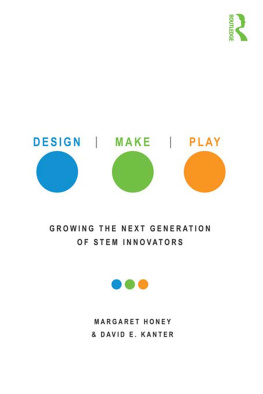The Latino Students Guide to STEM Careers
Laura I. Rendn and Vijay Kanagala, Editors
Foreword by Mildred Garcia

Copyright 2017 by ABC-CLIO, LLC
All rights reserved. No part of this publication may be reproduced, stored in a retrieval system, or transmitted, in any form or by any means, electronic, mechanical, photocopying, recording, or otherwise, except for the inclusion of brief quotations in a review, without prior permission in writing from the publisher.
Library of Congress Cataloging in Publication Control Number: 2017025631
ISBN: 978-1-61069-791-0
EISBN: 978-1-61069-792-7
21 20 19 18 17 1 2 3 4 5
This book is also available as an eBook.
Greenwood
An Imprint of ABC-CLIO, LLC
ABC-CLIO, LLC
130 Cremona Drive, P.O. Box 1911
Santa Barbara, California 93116-1911
www.abc-clio.com
This book is printed on acid-free paper. 
Manufactured in the United States of America
To every Latinx student who is exploring, seeking, fighting for
the countless possibilities that a
STEM college education and career can offer
~ may you and your efforts be fierce and fruitful;
may the powers of our ancestors, our teachers, and our familias
gently watch over you on your journey. ~
Contents
Mildred Garca
Laura I. Rendn and Vijay Kanagala
Karina I. Vielma
Marcela Cuellar and Juan Carlos Garibay
Vincent D. Carales, Ripsim Bledsoe, and Amaury Nora
Vijay Kanagala, Josephine J. Gonzalez, and Jose Adrian Leon
Dimitra Jackson Smith and Frankie Santos Laanan
Leslie A. Coward, Kimberly A. Koledoye, and Stella L. Smith
Rosa M. Banda and Alonzo M. Flowers III
Vijay Kanagala and Laura I. Rendn
Stephany Alvarez-Ventura
Alejandro Araiza
Diana Del Angel
Julissa Del Bosque
Xiomara Elias Argote
Dana M. Garca
Karla Gutierrez
Rodolfo Jimenez
Ricardo Martinez
Olivia Moreno
Elvia Elisa Niebla
Semarhy Quinones-Soto
Marina B. Suarez
Simon Trevino
Demeturie Toso-Lafaele Gogue and Sarah Maria Childs
Cynthia Diana Villarreal and Sarah Price
Foreword
Leadership tomorrow depends on how we educate our studentsespecially in science, technology, engineering, and math.
President Barack Obama, September 16, 2010
(U.S. Department of Education, 2014)
As a first-generation college student, a woman of color, and the daughter of two factory workers who had no more than eighth-grade educations (not from lack of intelligence but from lack of opportunity), I faced a myriad of obstacles throughout my academic journey, including a lack of educators with whom I could discuss possible career options.
My parents always said, The only inheritance a poor family can leave their children is a good education, and they wielded the power of that profound truth, which almost sounds poetic in Spanish, to light a fire under all seven of their children. When my father died when I was 12, my mother courageously carried the torch, using her job working in the Brooklyn factories to not only provide for us, but also ensure we understood the power of education could propel us to careers outside those factories and, in turn, manifest better lives for ourselves and our future families.
My teachers in elementary school, while providing me a very solid educational foundation, never discussed the possibilities of a career in science, technology, engineering, or math (STEM). As I marveled on the accomplishments of science, such as the first person walking on the moon, it was clear to me that those careers werent for people who looked like me or came from extreme poverty. So, as I read this book, it took me back to those early days of my life, prompting me to wonder what a difference this book could have possibly made in my own career choices.
The Latino Students Guide to STEM Careers is a must-read compendium and resource book for K-16 educators. It provides the tools necessary to educate the Latinx population, underscoring the need to inform parents and students about the wonders of engaging in STEM, available STEM careers, and the colleges and universities that best align with a students skills and aspirations.
It is also a wonderful resource for students and parents hoping to fully understand what it means to major in STEM and how to reach their academic goals and life dreams. Parents can learn about the multitude of important careers available to students who major in STEM along with the potential economic advantages of such careers. Finally, all readers of this book will come away with a deep understanding and appreciation of the importance of STEM, not only for students and families, but also our country and the world.
Rendn and Kanagala, the editors of the book, set an excellent foundation as to why the changing demographics in this country warrant the need for all educators to adapt and evolve to better serve Latinx students. In less than 25 years, by the year 2060, the Latinx population in the United States is projected to reach 119 million, constituting 28.6 percent of the nations population and making up the largest ethnic group (National Population Projections, 2014). Lets imagine, for a moment, how much the United States would progress if this new majority had both equitable access to a quality education in STEM and equal opportunities to contribute to the scientific discoveries of the nation and world.
Careers in engineering, medicine, space, aeronautics, cyber, mathematics, and beyond would grow exponentially, and the next generation of leaders in these industries would mirror the incredible diversity of both our nation and the global society in which we hope to lead and succeed. This will benefit not just the Latinx community in STEM but all students and professionals in STEM, and the discoveries in this ever-expanding field would become the nations most important asset.
Each of the 10 chapters continues to educate the reader on STEM careers and what it takes to achieve onefrom preschool to PhD and beyond. Many of the books authors are successful STEM scholars, individuals who share the facts along with their own particular journey. They pour out their hearts, explaining the joys, and yes, the challenges in getting to where they are, firmly acknowledging that it is all well worth itfor themselves, their families, their colleagues, and the nation.
Vielma in , Cuellar and Garibay provide detailed information on how to choose the right college and STEM program. This is particularly important because, for far too long, many Latinx students chose colleges based on reputation and/or where their friends may be attending, yet the research shows that choosing a college that fits the students particular needs, style, and interests is essential for success. Size, geography, student body and faculty demographics, types of academic programs, and support services all play a huge part in student success. This chapter provides those areas to think about before actually applying.
authors Carales, Bledsoe, and Nora provide detailed information about paying for college as well as valuable web resources for further information relevant to obtaining the necessary resources for the university of choice.
A plethora of higher education research exists to demonstrate that the first-year experience is critical for students of color. With the enrollment of first-generation, low-income Latinx college students on the rise, Kanagala, Gonzalez, and Leon, in (Banda and Flowers) delineate the steps necessary to ensure students enter higher education fully prepared to succeed in their chosen field. Moreover, the chapters provide career options, job titles, and midcareer salaries, educating the reader about the vast possibilities. They too provide additional online resources.
Next page


